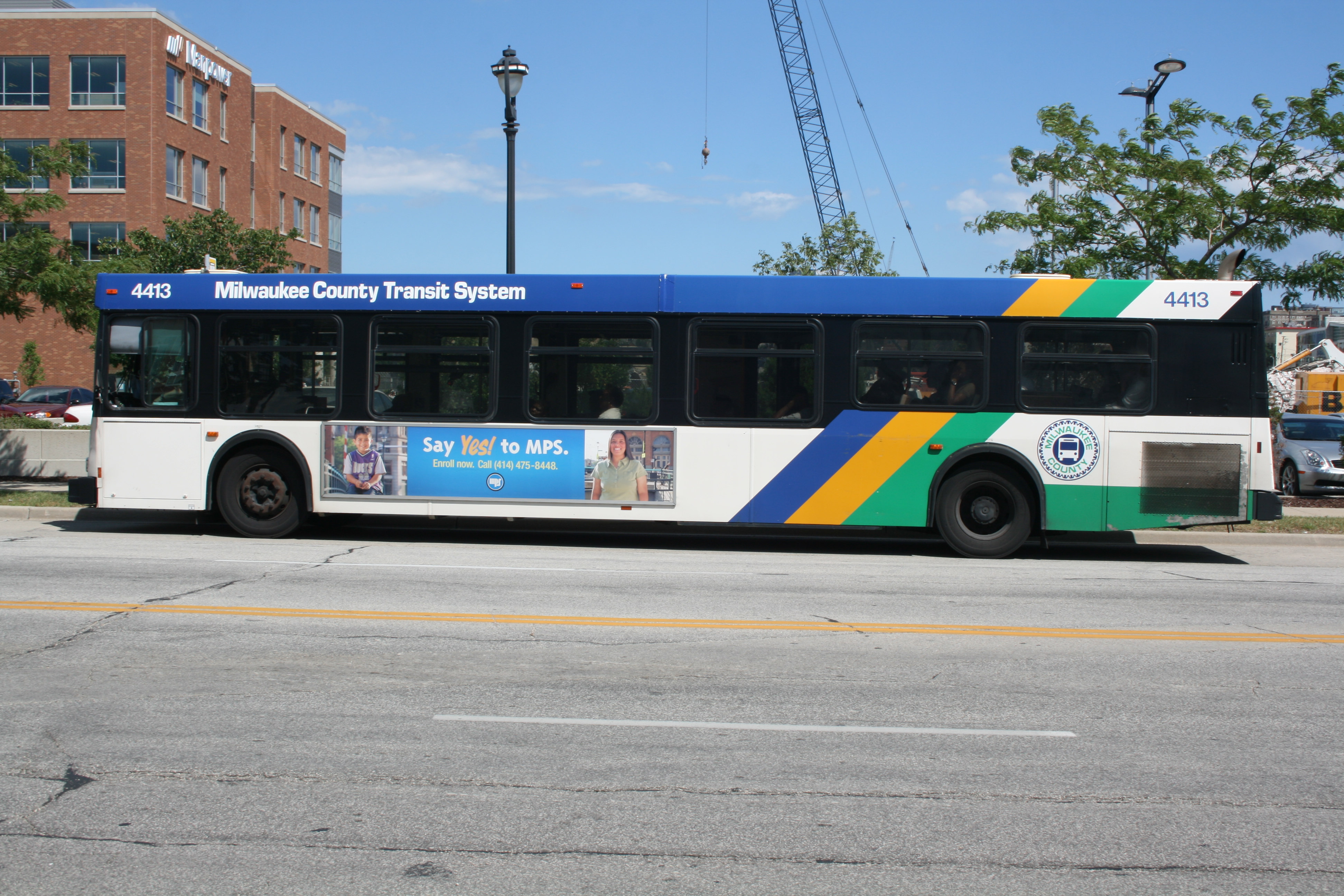Friday Photos Friday, 01. August 2008
Park Lafayette Park Lafayette – From Crank Daddy’s Park Lafayette – From Patty Burger Park Lafayette – From Kopp’a Farwell Foods Park Lafayette – Rises Above the City
Aug 1st, 2008 by Dave ReidMummy 3 Review
Jul 31st, 2008 by Vital ArchivesCommon Council Approves New Berlin Water Deal
This meeting included three highly debated resolutions, the “Wheel Tax”, the 9to5 direct legislation regarding sick pay, the water sale to New Berlin and the retirement of one of the most highly respected government officials. Marty Collins the outgoing Commissioner of the Department of Neighborhood Services gave a heartfelt farewell speech stating “I’m proud to be a public servant”. Then he left with some suggestions and encouraged the Common Council and city staff to promote creativity to find solutions.When the resolution known as the “Wheel Tax” came up for discussion Alderman Jim Witkowiak offered an amendment that would cap the fee at $20 for the duration of the current Common Council. Although Alderman Michael Murphy explained that this amendment wasn’t meaningful because it could simply be overridden with a resolution in the future. Another amendment was offered by Alderman Joe Dudzik that would allow a portion of the vehicle registration fee to support street maintenance. Again it was suggested that this amendment had little value because it will be up to the budgetary process to determine that actual spending. Both of these amendments and the overall resolution passed with a veto proof majority and will no go to the Mayor for action.Another hot button resolution was the piece of direct legislation brought forward by the group 9to5, National Association of Women by obtaining 42,000 signatures in sixty days. The intention of the resolution is to force employers within the City of Milwaukee to give all employees paid sick time. Alderman Bob Donovan spoke out against the resolution saying that “this resolution may end up hurting the very same people it is intended to help”. Alderman Jim Bohl also expressed his concerns that this would resolution hurt business and that “if jobs leave this community there are no benefits to be had”. The Common Council had two options regarding this resolution, either adopt it immediately without changes or let it go to binding referendum. The Common Council voted to let it go to referendum.The most hotly debated issue of the day was the proposed water sale and the associated intergovernmental agreement with New Berlin. Alderman Robert Bauman initially questioned the legality of the water sale saying that his concerns were “beyond the question of policy” because this transaction was outside the bounds of what the Common Council had approved in December of 2007. He questioned if the sale was proper because the original authorization to negotiate was in reference to an area of New Berlin within the current Milwaukee Metropolitan Sewerage District (“MMSD”) service area while this transaction included a portion of New Berlin that is planned to be in the MMSD service area sometime in the future. Alderman Murphy agreed that “the department made a mistake without a doubt” but that the City of Milwaukee needs to move forward with this transaction or New Berlin may find another solution.The intergovernmental agreement with New Berlin included a non-compete clause and a $1.5 million payment to the City of Milwaukee. The non-compete […]
Jul 31st, 2008 by Dave ReidPublic Works Committee Approves New Berlin Water Deal
This meeting’s highlights included the proposed water sale to New Berlin and the reappointment of Jeff Mantes to the Commissioner the Department of Public Works.The water sale involved two separate resolutions. Resolution 080012 would handle the actual water sale and resolution 080011 will enact an intergovernmental agreement contingent on the water sale. Water sales are regulated by the Public Service Commission of Wisconsin (“PSC“) which sets the wholesale price of water and oversees water contracts. Because of this any additional constraints beyond the sales agreement had to handled in an intergovernmental agreement. This intergovernmental agreement included a non-compete clause between the cities as well as a one time $1.5 million payment to the City of Milwaukee from New Berlin to offset some of the potential economic impact associated with this transaction. Further as this agreement proposes the sale of water outside of the Great Lakes Basin it follows the requirements set for within the Great Lakes Compact.New Berlin is seeking to obtain the additional water source to support the middle third of the city, to large extent because of high levels of the radium existing in their water and the depletion of their aquifer. During the discussion it was brought up, that if New Berlin isn’t able to purchase water from the City of Milwaukee that New Berlin may spend $4 million on an upgrade to their facilities or pursue purchasing water from Oak Creek. Both of these options were potentially more expensive for New Berlin than purchasing from the City of Milwaukee but Jack F. Chiovatero, the Mayor of New Berlin, indicated the pressing need by stating that “I wouldn’t be sitting in front off you if I didn’t have the radium issue”.Alderman Robert Bauman repeatedly made the point that New Berlin fails to meet the City of Milwaukee’s guidelines for water sales. These guidelines are based on access to mass transit and affordable housing within the community wishing to purchase water. Further he pointed out that this resolution does not reflect the original authorization to negotiate as passed by the Common Council in December 2007. In addition to Alderman Bauman’s vocal opposition various organizations such as the Good Jobs & Livable Neighborhoods Coalition, the Metropolitan Milwaukee Fair Housing Council, and the ACLU spoke out in opposition to the water sale. This opposition stems from the idea that sending water to sprawling communities without adequate housing or transit options makes access to the new jobs, that this transaction will support, near impossble for low-income residents of Milwaukee to access. In addition to those concerns Bill Holahan, the Chairman of the UWM Department of Economics stated that “over the next 20 years the expansion out there will swamp the $1.5 million” and that “economic value of the water is probably not reflected in the $1.5 million”. Despite these issues and concerns the resolution was approved and sent to a special meeting of the Finance & Personnel Committee held prior to July 30th’s Common Council Meeting.The other contentious item was the […]
Jul 30th, 2008 by Dave ReidThe Police
By Jim Cryns You can identify the number of 80s bands that can currently sell out a major venue on one hand. The Rolling Stones and The Police are among first that come to mind. The Police are and always have been a hard-hitting band with more power than three men should be able to provide. Together, they flex musical muscles greater than ensembles with twice the members. On a steamy summer night on the shores of Lake Michigan, Sting seemed genuinely happy to be in Milwaukee. On previous tours decades (or lifetimes) ago, he appeared to have a huge chip on his shoulder and an Elvis sneer, all part of his bad-boy image. As the band released Ghost in the Machine in 1981, Sting appeared to rage against the machine as well. Last Friday he was more avuncular and seemingly approachable. And some thirty years after the band first roared onto the U.S. music scene, Sting’s voice miraculously hasn’t lost a step. From the opening tune, Sting was into the gig, smiling, smirking, making eye contact with the front row. He was also sweating up a storm in his black pullover, black jeans and black combat boots. He grooved and swaggered with his well-worn bass flailing in his arms, sporting a rugged beard. Andy Summers sported what can only be described as a cross between Seinfeld’s puffy shirt and Jimmy Buffet Parrot-Head blouse. Stewart Copeland was just plain cool in a Police jersey and head band. Since the band’s last tour in 1984, technology has developed exponentially. Video screens and HD cameras capture every nuance of a performance, and The Police utilized the medium effectively at the Marcus Amphitheater. Four screens captured the finger-work of Andy Summers, the frenzied percussion precision of Stewart Copeland, and the charismatic visage of Sting and all he embodies. During “Invisible Sun,” the screens displayed children from throughout some of the world’s most devastated places, as photographed by friend and photographer Bobby Sager. The images are powerful, even heart-stopping. Twenty-five years ago the it was possible to miss the message in the melody; not so now. It took this series of images to bring the song to its full fruition. The band was tight both musically and in physical proximity, as if to give the impression (maybe to the guys themselves?) that the show was happening in a much more intimate venue. Copeland’s drum kit was quite close to the edge of the stage. Sting and Summers were right on the flanks of Copeland, rarely straying from their microphones. The Police didn’t need to jump around to entertain the crowd, their huge catalog of songs strutted ably on its own. While the production values were as impressive as one would expect, they were used to good effect rather than to upstage the music itself. Like all good maestros of rock and roll reunion tours, Sting cajoled the crowd to sing along, and Milwaukee didn’t disappoint. The band was playful, perhaps a bit mischievous, like […]
Jul 29th, 2008 by Vital ArchivesNorth Powerhouse Demolition
The Urban Milwaukee authors have been closely following the destruction of the North Powerhouse along the Milwaukee River. We've accumulated a nice collection of photos tracking the demolition progress. The building was built in the late 1920s and used by the city to help distribute steam throughout downtown Milwaukee.
Jul 28th, 2008 by Jeramey JanneneWeekly Bookmarks – Monday, 28. July 2008
JS Online: Park East housing-retail project still on, developer says Congressional leaders introduce Great Lakes Compact bill – Small Business Times New Land Proposes $60M Lake Condo Tower Pfister & Vogel Water Tower moved to its new home – Small Business Times JS Online: V. Richards Market owner, produce manager face stolen property charges JS Online: Plan to turn vacant Sinai property into apartments OK’d Milwaukee receives $1.3M in EPA grants – The Business Journal of Milwaukee:
Jul 28th, 2008 by Dave ReidEarning Chops
Back in the heady days when “outsider” (a term I dislike) art was hot, painter Fred Stonehouse was a big star, particularly at the Dean Jensen Gallery, and later, at the Tory Folliard Gallery. Gee whiz, Madonna bought at least one of his quirky paintings! Stonehouse just kept doing his thing and never let it go to his head. Frankly, he earned every inch of his success, so it is great to learn that he recently was hired to teach at UW-Madison, which means he’s going to spend lots of time commuting from here to there and back again. I know I’m years behind, but I just finished reading Love In The Time of Cholera, the 1988 masterful magic-realism novel by Gabriel Garcia Marquez, and was delighted to learn that Stonehouse’s work is heavily influenced by the writings of Marquez. To my mind, there is no such thing as great art without great thought. What’s lacking in so much of what’s passed off as “art” is the ability to integrate one’s personal experiences and all that one learns from either those experiences (or the study of the experiences of others) into moments of sublime understanding. Stonehouse earned his chops by paying attention. Vox, Acrylic on Canvas, 36″ x 48″ Fred Stonehouse Courtesy of Tory Folliard Gallery – Milwaukee Two others who pay attention are Tom Bamberger, a local photographer and frequent contributor to Milwaukee Magazine, who is teaching at UW-Milwaukee, and Debra Brehmer, another frequent contributor to Milwaukee Magazine and the co-owner of the Portrait Gallery, who has been teaching for about five years at MIAD. It’s no big surprise that both are fans of Stonehouse. Quality attracts quality. All three earned their chops by paying attention.
Jul 27th, 2008 by Stella CretekWhat is Supervisor Coggs Thinking?
At a time when Milwaukee County is cutting transit service and neglecting our parks, Supervisor Coggs is promoting a $3,600 pay raise for Milwaukee County Board members.
Jul 26th, 2008 by Dave ReidFriday Photos Friday, 25. July 2008
Breakwater – 16th Floor Looking Southwest Breakwater – 16th Floor Looking Northeast Breakwater Breakwater – 16th Floor Looking East Breakwater – 16th Floor Looking West
Jul 25th, 2008 by Dave ReidWhat’s The Cost of Parking in Downtown Milwaukee?
What's the cost of parking in downtown Milwaukee? It might just be more than the cost of plugging the meter. The low cost of parking in Milwaukee might actually be preventing new development from happening downtown.
Jul 24th, 2008 by Jeramey JanneneZoning Committee Approves 52-Unit Assisted Living Facility
Resolution 080422 proposed the building of an 52-unit assisted living facility at 2195 W. State St. which will serve elderly low income individuals. This project faced some opposition at City Plan Commission and the same resident appeared before this committee. An additional neighbor spoke in opposition and both residents’ argument revolved around saving one tree and preserving “historic” green space. Alderman Bob Bauman responding to this criticism by explaining that “frankly i thought this was a very positive development” and went on to make it very clear that the hill is not recognized as “historic”. It should also be pointed out that this green space is in private hands and that the current zoning regulations would stop the owner from removing the trees. Despite the neighbors’ complaints this resolution was approved and will go before the Common Council.Resolution 080195 is another resolution of interest because it proposed a variety of changes to City of Milwaukee storm water management regulations. The overriding theme of this resolution was to discourage the construction of non-permeable surfaces. These non-permeable surfaces increase the water flow into the sewer system and increase water pollution by reducing rain water’s ability to enter the ground soil for natural filtration. This resolution encourages this reduction by allowing for narrower streets and reconfigured streets that include more permeable features. Additionally it updates parking requirements to encourage less non-permeable surfaces from being developed. This resolution was approved and will go before the Common Council.
Jul 23rd, 2008 by Dave Reid





















